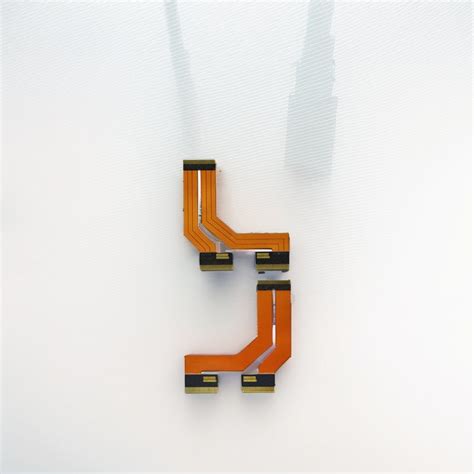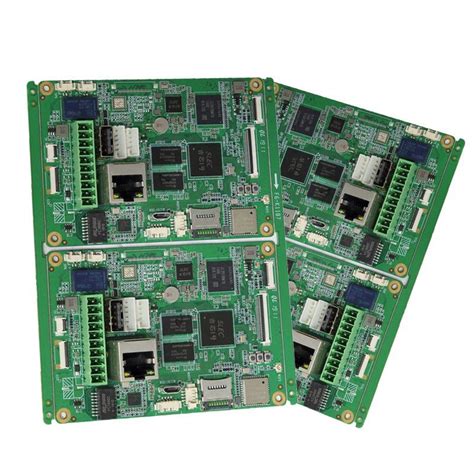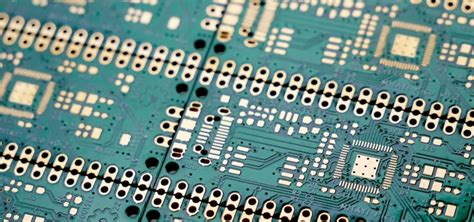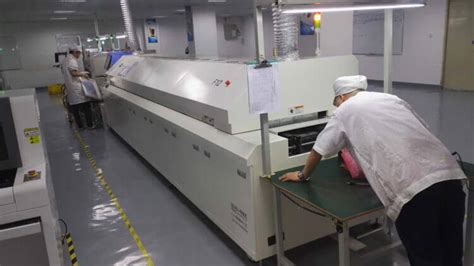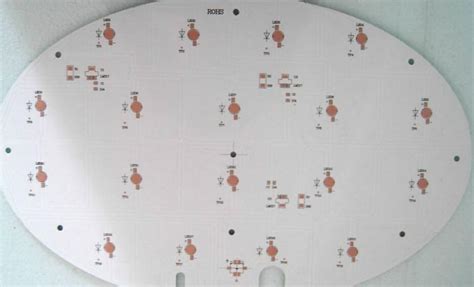Discover the Best PCB Assembly Service for Your Projects
Key Takeaways
When embarking on a project that requires PCB assembly, it is crucial to grasp the various elements that contribute to a successful manufacturing process. Ensuring quality and efficiency begins with selecting the right PCBA provider, which necessitates an understanding of key factors such as the provider’s experience, technological capabilities, and customer service support. It’s beneficial to delve into a comparative analysis of top providers in the market, as this may reveal unique advantages or specializations that align with your project’s specific needs. Additionally, implementing robust quality assurance processes is essential in delivering reliable PCB assembly products. Don’t overlook the significance of prototyping, as it serves as an invaluable step in validating designs before full production, minimizing errors and costly revisions. Finally, employing cost-effective strategies can greatly reduce expenses while maintaining high standards in your PCBA efforts, making it easier to stay competitive in today’s evolving electronics landscape. These insights will empower you to make informed decisions and enhance the overall outcome of your projects.
Understanding PCB Assembly: A Comprehensive Overview
PCB assembly (Printed Circuit Board Assembly) is a critical phase in the electronics manufacturing process, merging both technological precision and strategic planning. The essence of PCBA involves the careful integration of electronic components onto a printed circuit board to create functional assemblies that drive countless applications, from consumer electronics to industrial machinery. Understanding the nuances of this process is imperative for achieving high-quality, efficient results in projects.
To grasp the complexities of PCB assembly, one must consider different methodologies, ranging from through-hole to surface mount technology (SMT). Each method has its own set of advantages and challenges that can influence production speed, cost-effectiveness, and component reliability. The choice between these methodologies often depends on factors like size, performance requirements, and manufacturing volume.
In addition, quality assurance plays a pivotal role in ensuring that the final products meet industry standards. Key metrics such as yield rates and defect levels must be consistently monitored throughout the PCBA process to safeguard against potential failures. Assembling circuit boards at scale requires not just technical expertise but also access to advanced machinery and quality inspection systems.
Let’s explore some important aspects to consider in PCB assembly:
| Factor | Description |
|---|---|
| Component Placement | Accuracy in placing components is vital for reducing errors during assembly. |
| Soldering Techniques | Different techniques impact reliability; choose between wave soldering or reflow. |
| Testing Protocols | Implementing rigorous testing protocols ensures functionality and durability. |
By understanding these fundamentals of PCB assembly, industry professionals can better navigate their projects towards successful outcomes while optimizing production capabilities.
Key Factors to Consider When Choosing a PCB Assembly Service
Selecting the right PCB assembly service is crucial for the success of your electronics projects. One of the primary factors to consider is the provider’s experience in the industry. Companies with a solid track record are likely to have refined their processes and can handle intricate designs efficiently. Look into their quality assurance practices, as this directly impacts the reliability and performance of your end product. Additionally, assess their capability for scalability. As your project evolves, you’ll want a partner who can adapt to increased production demands without sacrificing quality.
Another important aspect is communication. A responsive PCB assembly service will ensure that you are kept informed throughout the manufacturing process, allowing for adjustments and feedback to be integrated smoothly. Consider the technological capabilities they offer as well—automated processes and advanced machinery can enhance speed and precision in PCBA production.
Lastly, don’t overlook customer reviews and case studies; these provide insight into previous clients’ experiences and can highlight strengths or weaknesses you might not initially see. By keeping these key factors in mind, you will be better equipped to find a pcb assembly partner that meets your specific requirements and industry standards effectively.
Top PCB Assembly Service Providers: A Comparative Analysis
When it comes to selecting a PCB assembly service, understanding the landscape of top providers is crucial for ensuring the success of your projects. The market is filled with companies offering various capabilities, each with unique strengths that may suit different project requirements. For example, some PCB assembly houses excel in speed and efficiency, making them ideal for high-volume orders, while others may offer comprehensive customization options that are perfect for specialized applications.
In this comparative analysis, it’s essential to assess key factors such as the provider’s experience in industry-specific applications, their technological capabilities (like automated assembly versus manual processes), and their ability to produce high-quality PCBA output. Furthermore, client support and communication play significant roles in long-term collaboration.
“Choose a provider who not only meets your technical requirements but also aligns with your vision for the final product.”
Additionally, consider factors like turnaround time and shipping logistics because these elements can profoundly impact project timelines. Some of the most reputed PCB assembly service providers have also incorporated sustainable practices into their manufacturing processes, reflecting the growing industry trend towards environmental responsibility. By comparing these various aspects among leading companies, you can make an informed decision that will enhance your project outcomes and drive efficiency in production.
Quality Assurance in PCB Assembly: What to Look For
When evaluating a pcb assembly service, understanding the quality assurance processes they implement is essential for ensuring reliable performance in your projects. Look for certifications such as ISO 9001, which indicate adherence to international quality standards. An effective pcb assembly provider should also conduct thorough testing methodologies, including in-circuit testing, functional testing, and visual inspections. Moreover, consider how the provider handles component sourcing; they should have established relationships with reputable suppliers to guarantee the quality of components used in your pcba. Transparency in their production processes is another crucial factor—providers who openly share their procedures and metrics often demonstrate a greater commitment to quality. Additionally, seek out those who offer a clear warranty policy for their services, as this can be an indicator of confidence in their workmanship and materials. By focusing on these aspects of quality assurance, you can choose a pcb assembly service that aligns closely with your project needs and enhances the overall reliability of your electronics manufacturing efforts.
The Importance of Prototyping in PCB Assembly Projects
Prototyping is a critical phase in PCB assembly projects as it allows engineers and designers to evaluate their concepts before entering full-scale production. This initial step not only aids in identifying potential design flaws but also ensures that the chosen materials and components meet the desired specifications. A well-executed prototype provides invaluable feedback, enabling teams to iterate on designs swiftly. As such, the value of prototyping cannot be overstated; it acts as a safeguard against costly mistakes that may arise during later stages of production.
When selecting a PCB assembly service, it’s essential to ensure that they prioritize prototype development. Many top providers offer specialized services for creating prototypes, which can dramatically impact the overall timeline and budget of your project. Having access to advanced fabrication techniques can enhance the quality of prototypes produced, ultimately leading to more effective PCBA solutions. With well-crafted prototypes, teams can engage in thorough testing, validate functionality, and make necessary adjustments before proceeding with mass production.
Moreover, the prototyping phase fosters collaboration among stakeholders—engineers, designers, and manufacturers—ensuring that everyone’s insights are considered. This collaborative effort not only streamlines the design process but also promotes efficiency throughout PCB assembly projects. Therefore, investing time and resources into prototyping markedly improves the likelihood of successful outcomes in electronics manufacturing endeavors.
Cost-Effective Strategies for PCB Manufacturing
When it comes to pcb assembly, implementing cost-effective strategies is crucial for optimizing your production processes without compromising quality. One essential approach is to invest in efficient design software that allows for better layout planning and minimizes material waste. Additionally, selecting the right materials and components for your pcba can significantly impact the overall cost, enabling you to maintain high standards while keeping expenses in check. It’s also beneficial to partner with reputable pcb assembly services that offer bulk discounts and or long-term contracts, which can reduce per-unit costs. Streamlining your supply chain and implementing just-in-time (JIT) inventory practices can help in managing costs without sacrificing delivery timelines. Finally, engaging in thorough testing and quality control practices during the assembly phase ensures that any defects are caught early, thereby preventing costly revisions later in the process. These strategies combined create a robust framework for achieving efficient and affordable pcba, ultimately supporting your project’s success while maximizing budget effectiveness.
Industry Insights: Trends in PCB Assembly Services
The pcb assembly industry is continuously evolving, reflecting broader technological advancements and market demands. One notable trend is the increasing emphasis on automation in the pcba process, which enhances efficiency and reduces production costs. Companies are increasingly integrating automated assembly technologies, such as pick-and-place machines and soldering equipment, to minimize human error and increase throughput. Additionally, there’s a growing focus on sustainability, with many manufacturers seeking eco-friendly materials and processes to reduce waste. This shift not only caters to a more environmentally conscious consumer base but also often leads to cost savings over time. Another emerging trend is the rise of flexible PCB assemblies, which enable greater design versatility for compact electronics. These advancements require suppliers to stay ahead of the curve, constantly innovating their offerings to meet these changing demands. As businesses pursue more complex projects, partnering with a top-tier PCB assembly service that understands these trends is crucial for ensuring high-quality production that meets current market needs. Keeping abreast of these developments will help organizations make informed decisions when choosing their pcba providers, ultimately leading to successful outcomes in their electronics manufacturing endeavors.
Conclusion
When selecting the ideal PCB assembly service for your projects, it is essential to weigh various factors that align with your specific needs. A notable factor is the experience of the service provider in handling different types of PCBA projects. A company with a proven track record can significantly contribute to the reliability and performance of your electronic devices. Furthermore, evaluating their quality assurance processes is crucial; ensuring that they adhere to industry standards can help mitigate risks associated with defective products. Don’t overlook customer reviews and case studies, as they provide valuable insights into the provider’s capabilities and customer satisfaction levels. Additionally, consider their capacity for handling both small-run prototypes and larger-scale production without compromising quality. By thoroughly assessing these elements, you’ll be better positioned to choose a PCB assembly partner that meets your project requirements efficiently and effectively, ultimately enhancing your product’s overall success in the market.
FAQs
What is pcb assembly?
PCB assembly, often referred to as PCBA, is the process of soldering various electronic components onto a printed circuit board (PCB) to create a functional electronic device.
Why is choosing the right pcb assembly service important?
Selecting the best pcb assembly service ensures optimal quality, efficiency, and reliability in your electronic manufacturing projects. It directly impacts your product’s performance and marketability.
What factors should I consider when choosing a pcba provider?
Key factors include quality assurance, cost-effectiveness, turnaround time, customer service, and the provider’s experience in handling projects similar to yours.
How can I ensure quality in my pcb assembly process?
Look for services that offer comprehensive quality checks at various stages of production. This includes optical inspection, functional testing, and adherence to industry standards.
What are the benefits of prototyping before full-scale pcb assembly?
Prototyping allows you to test your design before full production begins. It helps identify potential issues early on and allows for adjustments without incurring significant costs.
Are there cost-effective strategies for pcba manufacturing?
Consider options like bulk orders to reduce per-unit costs or collaborating with experienced suppliers who offer competitive pricing without compromising on quality.

